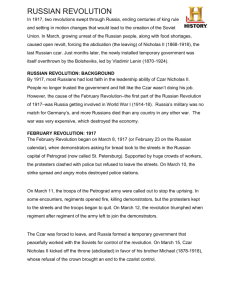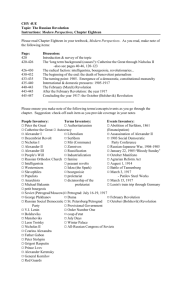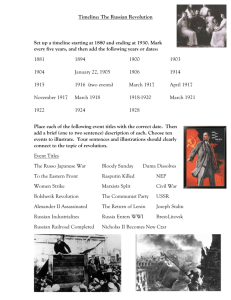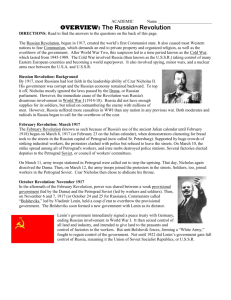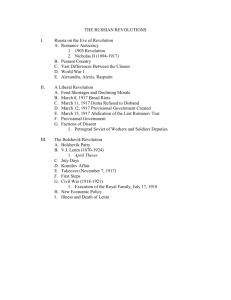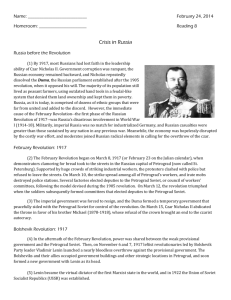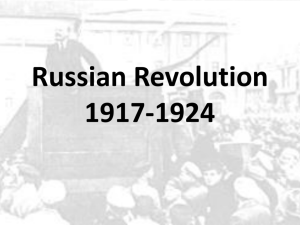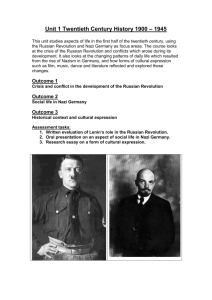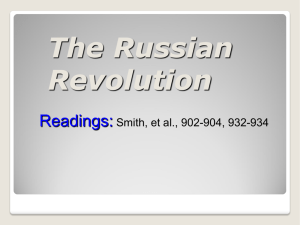File
advertisement
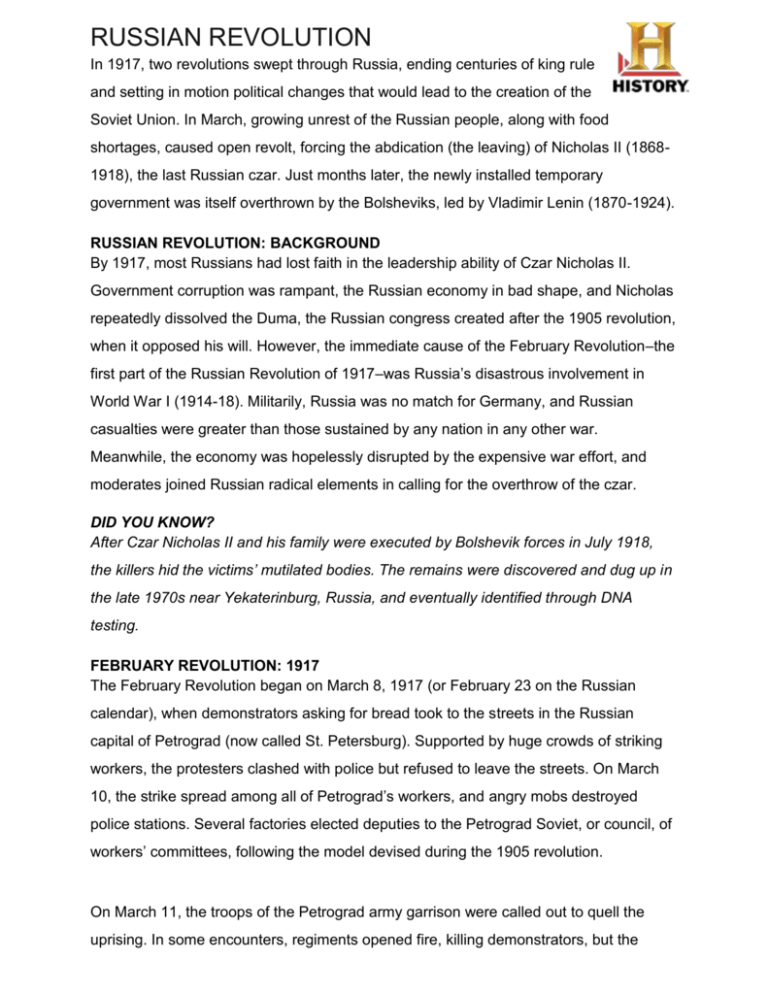
RUSSIAN REVOLUTION In 1917, two revolutions swept through Russia, ending centuries of king rule and setting in motion political changes that would lead to the creation of the Soviet Union. In March, growing unrest of the Russian people, along with food shortages, caused open revolt, forcing the abdication (the leaving) of Nicholas II (18681918), the last Russian czar. Just months later, the newly installed temporary government was itself overthrown by the Bolsheviks, led by Vladimir Lenin (1870-1924). RUSSIAN REVOLUTION: BACKGROUND By 1917, most Russians had lost faith in the leadership ability of Czar Nicholas II. Government corruption was rampant, the Russian economy in bad shape, and Nicholas repeatedly dissolved the Duma, the Russian congress created after the 1905 revolution, when it opposed his will. However, the immediate cause of the February Revolution–the first part of the Russian Revolution of 1917–was Russia’s disastrous involvement in World War I (1914-18). Militarily, Russia was no match for Germany, and Russian casualties were greater than those sustained by any nation in any other war. Meanwhile, the economy was hopelessly disrupted by the expensive war effort, and moderates joined Russian radical elements in calling for the overthrow of the czar. DID YOU KNOW? After Czar Nicholas II and his family were executed by Bolshevik forces in July 1918, the killers hid the victims’ mutilated bodies. The remains were discovered and dug up in the late 1970s near Yekaterinburg, Russia, and eventually identified through DNA testing. FEBRUARY REVOLUTION: 1917 The February Revolution began on March 8, 1917 (or February 23 on the Russian calendar), when demonstrators asking for bread took to the streets in the Russian capital of Petrograd (now called St. Petersburg). Supported by huge crowds of striking workers, the protesters clashed with police but refused to leave the streets. On March 10, the strike spread among all of Petrograd’s workers, and angry mobs destroyed police stations. Several factories elected deputies to the Petrograd Soviet, or council, of workers’ committees, following the model devised during the 1905 revolution. On March 11, the troops of the Petrograd army garrison were called out to quell the uprising. In some encounters, regiments opened fire, killing demonstrators, but the protesters kept to the streets and the troops began to waver. That day, Nicholas again dissolved congress. On March 12, the revolution triumphed when regiment after regiment of the Petrograd garrison left to join the cause of the demonstrators. The soldiers then formed committees that elected deputies to the Soviet. The imperial government was forced to resign, and Russia formed a temporary government that peacefully worked with the Soviets for control of the revolution. On March 15, Czar Nicholas II abdicated the throne in favor of his brother Michael (18781918), whose refusal of the crown brought an end to the czarist control. BOLSHEVIK REVOLUTION: 1917 On November 6 and 7, 1917, revolutionaries led by Bolshevik Party leader Vladimir Lenin launched a defeat of the provisional government. The Bolsheviks and their allies occupied government buildings and other strategic locations in Petrograd, and soon formed a new government with Lenin as its head. Lenin became the virtual dictator of the first Marxist state in the world. His government made peace with Germany, nationalized industry and distributed land, but beginning in 1918 had to fight a devastating civil war against anti-Bolshevik White Army forces. In 1920, the anti-Bolsheviks were defeated, and in 1922 the Union of Soviet Socialist Republics (USSR) was established. Example Timeline of MLK:

